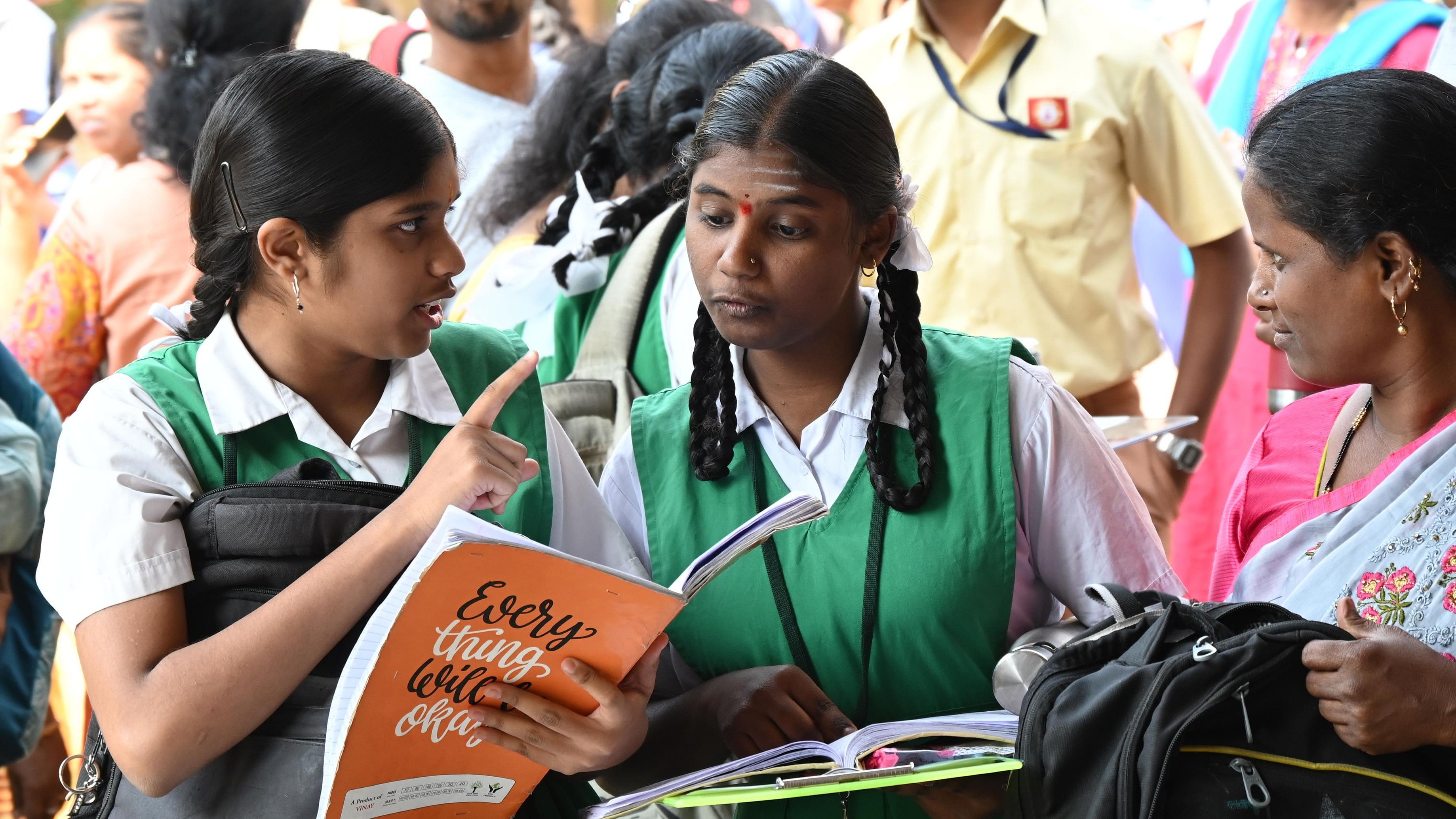
Students along with their parents at the Government school campus on the first day of SSLC exam.
Credit: DH File Photo
The pass percentage in the Karnataka Secondary School Leaving Certificate (SSLC) examinations plummeted from 83.89% last year to a shocking 54% this year. This raises serious questions. However, as a face-saving measure, the government has awarded grace marks to over 1.6 lakh students who had not passed the examinations, thereby bolstering the final declared pass percentage to 74%. While the usual practice is to award grace marks to students who had only narrowly missed the passing mark of 35 out of 100, this year even those who had scored as low as 25 marks were given enough grace marks to push them beyond the pass line. Besides, 20 marks were awarded as grace marks as against the norm of 10. According to the school education department, this year, cameras had been introduced and the exams were web-streamed to restore the integrity of the process. The department had called it a pathbreaking measure to ensure that students did not resort to malpractice and that was said to be the main reason for the poor results. If that’s so, then malpractices must have been rampant in the previous years when higher pass percentages were announced. If that be the case, then serious questions arise over the quality of education and learning in the state’s schools.
School education department Principal Secretary Ritesh Kumar Singh has defended the government’s grace marks decision saying it had the power to apply a “normalisation process” to increase the pass percentage “scientifically”. But by doing so, the government has itself compromised the integrity of the examination and evaluation process. In which case, what was the point of training cameras on the students while they were writing the exams and web-streaming it all? Might it be possible that it is schools, teachers and the school department that actually failed many students who had perhaps fallen behind in learning during the Covid years and who perhaps must have needed some extra help to learn and prepare for the exams?
While the government may have been ‘generous’ in giving grace marks and promoting students who had failed, it is likely to have done them more harm than good. How will they face examinations in higher classes? Instead, the government could have directed schools to help the students prepare for another attempt some months hence. The poor results are a wake-up call for all concerned. The government, for its part, must take the issue serious and identify the reasons for students’ learning deficits. There is also an urgent need to assess the quality of teachers and re-train them where necessary.